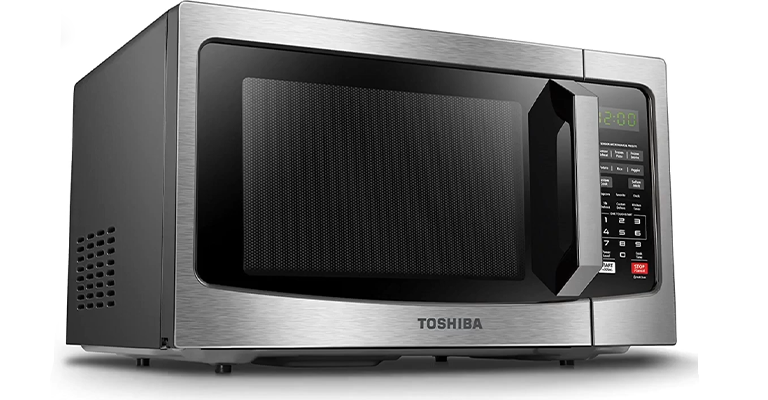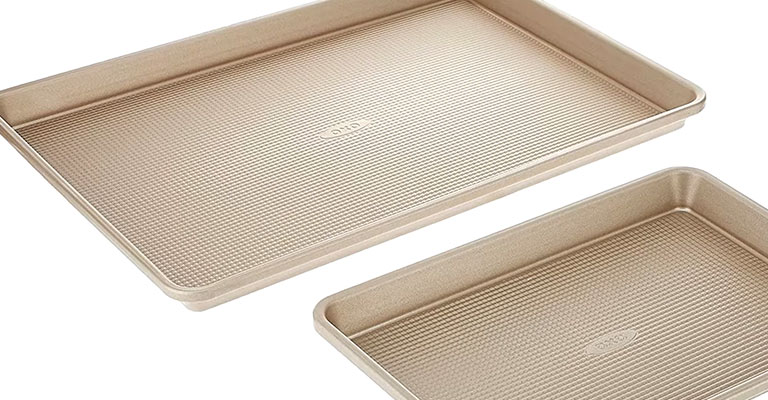Why Sink In Kitchen Island?-Stylish Choice for Modern Homes
A sink into the kitchen island represents a pivotal shift in modern kitchen design, revolutionizing the way we approach culinary tasks.
This strategic placement of the sink in the heart of the kitchen offers a myriad of advantages, ranging from improved workflow efficiency to heightened social interaction during meal preparation.
Allocating a dedicated space for washing and food preparation, optimizes the kitchen layout, fostering a seamless and organized environment.
Additionally, this design choice opens up creative possibilities for storage solutions and multi-functional island use. From both a practical and aesthetic standpoint, a sink in the kitchen island redefines the very essence of a functional, inviting culinary space
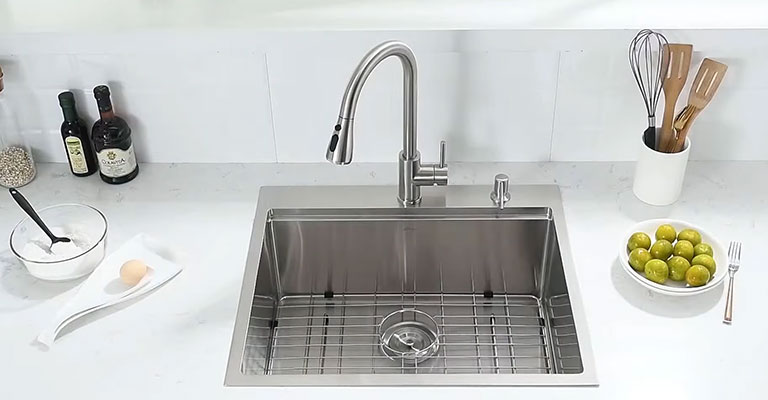
Why Sink In Kitchen Island?
A sink in a kitchen island can be a valuable and versatile addition to any kitchen space.
Here are several compelling reasons why homeowners choose to incorporate a sink into their kitchen island:
Efficient Workspace Design
Having a sink in the kitchen island fosters an efficient and well-organized workspace.
This arrangement allows for an unobstructed countertop area along the walls, ideal for tasks like chopping, prepping, and cooking.
Enhanced Social Interaction
A kitchen island with a sink encourages social interaction during meal preparation.
It enables the person working at the sink to engage with family members or guests seated at the island, creating a more inclusive and convivial atmosphere.
Streamlined Workflow
Proximity to the cooking area on the island streamlines the workflow in the kitchen.
This setup reduces the need for excessive movement, making tasks like washing, chopping, and cooking more efficient.
Dual-User Capability
In kitchens where multiple individuals are involved in meal preparation, a sink in the island is highly practical.
It allows for simultaneous use, enabling one person to wash dishes or ingredients while another uses the main countertop for meal prep.
Increased Storage Options
A sink in the island opens up additional storage opportunities.
The space beneath the sink can be used for storing cleaning supplies, garbage bins, or even a dishwasher, maximizing the functionality of the kitchen island.
Design Aesthetics
From a design perspective, a sink in the kitchen island can be visually striking.
It provides a focal point in the kitchen and can serve as a centerpiece, especially when complemented by a stylish faucet and well-chosen materials.
Expansive Views
Placing a sink on the island allows the person using it to have an unobstructed view of the surrounding space.
This can be advantageous in kitchens with large windows or open floor plans, offering a more engaging and enjoyable cooking experience.
Flexibility in Kitchen Layout
A sink on the island provides flexibility in kitchen layout design.
It can be particularly beneficial in kitchens with limited wall space, where installing a sink along the perimeter might not be practical.
Multi-Functional Space
The kitchen island becomes a multi-functional space with a sink. Beyond food preparation and cleanup, it can also serve as a bar, a serving area for meals, or a place for children to do homework while still being supervised.
Improved Traffic Flow
Placing the sink on the island can improve the overall traffic flow in the kitchen.
It reduces congestion around the main work area, allowing multiple people to move around the space comfortably.
Common Problems With Having a Sink in the Kitchen Island
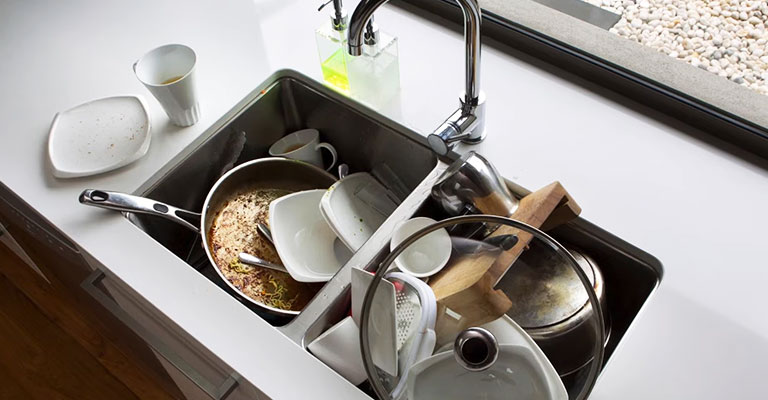
While having a sink in the kitchen island can offer numerous benefits, it’s essential to be aware of potential challenges and common problems associated with this design choice:
Plumbing Complexity
Adding plumbing to the kitchen island can be more complicated and expensive than incorporating it into a wall.
This may require adjustments to the existing plumbing system, which can lead to increased costs and potential issues if not done correctly.
Island Size
Smaller kitchens with limited space for an island may not be suitable for including a sink, as it can consume a significant portion of the island’s surface area, leaving less room for other functions.
Maintenance
Kitchen islands with sinks are more prone to splashes and spills. As a result, they may require more frequent cleaning to keep the surrounding area dry and tidy.
Storage Space
The placement of a sink in the kitchen island can reduce the amount of storage space available. Plumbing fixtures under the sink may limit the depth and usability of the cabinets or drawers beneath.
Noise
Kitchen sinks can be noisy when in use, especially when washing dishes or using a garbage disposal.
Having the sink on the island can make these sounds more noticeable and disrupt conversations or activities taking place around the island.
Ventilation
Adequate ventilation is crucial in the kitchen, particularly when cooking.
Placing a cooktop or stove on the island close to the sink may pose challenges for ventilation, as it’s often more straightforward to install range hoods against a wall.
Countertop Material
The material used for the island countertop must be durable and resistant to moisture. Frequent exposure to water can damage certain materials, such as wood or some types of stone.
Dish Drying
When you don’t have a separate dishwashing area, drying dishes can be a challenge.
Some homeowners address this by including a dish-drying rack or opting for an island with built-in dish-drying features.
Cabinet Organization
The cabinets under the island sink may require specialized organization solutions to make the most of the space due to the plumbing and fixtures. This can increase the cost and complexity of cabinetry.
Design Flow
The aesthetics of a sink on the island may not suit every kitchen’s design. It’s essential to carefully plan the layout and select fixtures and materials that complement the overall kitchen design.
Island Seating
When the island serves as an eating area, the presence of a sink may not be ideal. It can create an awkward or less inviting dining space.
Installation Challenges
Retrofitting an island with a sink can be more challenging than incorporating it into the initial kitchen design.
Cutting into the existing island structure, especially if it’s not designed for plumbing, can be costly and complex.
How to Overcome Problems with Having a Sink in the Kitchen Island?
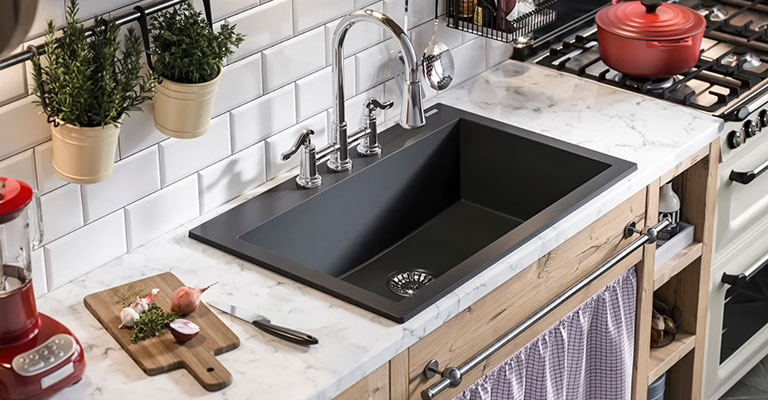
Overcoming problems associated with having a sink in the kitchen island involves careful planning, strategic design choices, and sometimes, the implementation of specific solutions.
Here are steps to help mitigate potential challenges:
Plumbing Considerations
Work with a qualified plumber to ensure that the plumbing is properly installed. This may involve rerouting or extending existing plumbing lines to accommodate the island sink.
Island Size and Layout
Ensure the island is large enough to comfortably accommodate a sink without sacrificing essential counter space.
Consider the overall layout of the kitchen to ensure that the island doesn’t impede the flow of traffic.
Maintenance Strategies
Choose materials and finishes that are easy to clean and maintain. Consider using a durable, water-resistant countertop material that can withstand regular exposure to water.
Storage Solutions
Explore specialized storage solutions designed for under-sink areas.
Utilize pull-out trays, organizers, and shelving units to maximize storage space while accommodating plumbing fixtures.
Noise Reduction
Opt for soundproofing measures during installation to minimize noise generated by the sink.
This can include insulating the cabinet space beneath the sink or using noise-reducing materials.
Ventilation Planning
Install a powerful ventilation system, such as a range hood with a high CFM (cubic feet per minute) rating, to effectively remove cooking odors and steam from the island area.
Dish Drying Solutions
If possible, designate a separate area for dish drying, such as a nearby countertop or a built-in dish drying rack integrated into the island.
Cabinet Organization
Invest in specialized organizers and storage solutions designed for under-sink cabinets to optimize storage space and keep cleaning supplies organized.
Design Integration
Ensure that the sink’s design complements the overall aesthetic of the kitchen.
Choose a sink and faucet that harmonizes with the style of the surrounding cabinetry and countertops.
Seating Arrangements
If the island serves as an eating area, plan the seating arrangement to ensure it’s comfortable and convenient for diners, taking into account the presence of the sink.
Professional Installation
Seek the services of experienced professionals, including plumbers and kitchen designers, to ensure that the sink is installed correctly and integrates seamlessly into the island.
Regular Maintenance
Implement a routine maintenance schedule to address any issues promptly.
This includes checking for leaks, ensuring proper drainage, and cleaning the sink and surrounding area regularly.
How Can You Maintain the Island Sink Area?
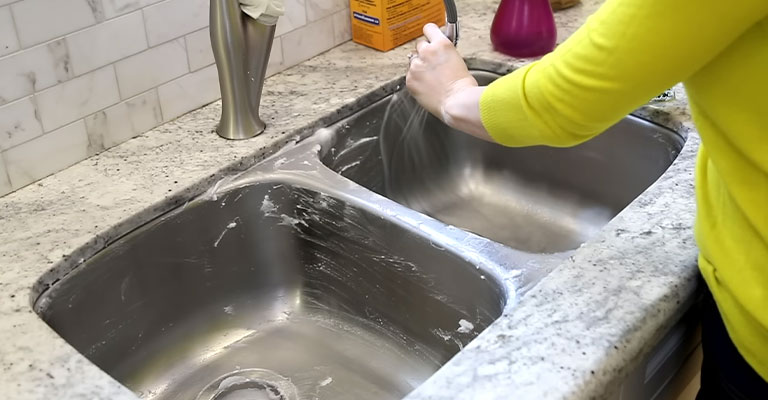
Maintaining the island sink area is crucial to ensure its functionality, cleanliness, and longevity.
Here are some steps you can take to keep the island sink area in top condition:
Regular Cleaning
Regular cleaning of the sink and surrounding countertop is essential in maintaining a hygienic and appealing kitchen space.
Use a mild soap or kitchen cleaner to wipe down the surfaces, ensuring all food residues and grime are removed. Rinse thoroughly and then dry the area to prevent water spots or stains from forming.
Use Non-Abrasive Cleaners
Avoid using harsh or abrasive cleaners on your sink and countertop, as they can scratch or damage the surface over time.
Instead, opt for specially formulated cleaners designed for your specific sink material. These will effectively clean without causing any harm.
Address Stains Promptly
Prompt attention to stains or discolorations is key to keeping your sink area looking its best. Different materials may have specific stain-removing techniques.
Always consult the care instructions provided by the manufacturer for the best approach to address any stains.
Avoid Harsh Chemicals
Steer clear of using harsh chemicals like bleach, ammonia, or acidic substances in the sink area. These can corrode or discolor certain materials over time.
Instead, opt for gentle, eco-friendly cleaning solutions that are safe for both your sink and the environment.
Clean the Drain and Garbage Disposal
Regular maintenance of the drain and garbage disposal is crucial for preventing clogs and unpleasant odors.
Use a mixture of baking soda and vinegar followed by a flush of hot water to freshen the drain. This natural remedy effectively clears away food particles and keeps the area smelling clean.
Inspect for Leaks
Periodically check for any signs of leaks under the sink, such as dampness or water stains.
Address any issues promptly to prevent water damage to your cabinets and the surrounding area. If you notice any leaks, contact a plumber to fix the problem as soon as possible.
Maintain the Faucet
The faucet is a central component of the sink area. Regularly clean and inspect it for any signs of wear or mineral deposits.
This ensures smooth operation and prevents any buildup that could lead to reduced water flow or drips.
Use Sink Mats or Liners
To protect the sink’s surface from scratches caused by heavy pots, pans, or sharp objects, consider using sink mats or liners.
These can help preserve the integrity of the sink’s material, ensuring it remains in top condition for years.
Empty the Dish Rack
When you use a dish rack in the sink area, be sure to empty it regularly. Allowing water to pool in the rack can potentially cause damage to both the rack itself and the sink’s surface.
Dry the Area Thoroughly
After washing dishes or using the sink, take a moment to thoroughly dry the surrounding area.
This prevents water spots from forming on the countertop and keeps the space looking clean and inviting.
Seal Natural Stone Countertops
For natural stone countertops like granite or marble, consider sealing them periodically.
This protective measure helps guard against stains and etching, ensuring the beauty and integrity of the stone over time.
Regular Plumbing Maintenance
Schedule routine checks of your plumbing system to ensure there are no hidden leaks or issues with the fixtures.
A professional plumber can identify and address any potential problems before they escalate.
FAQs
Why choose a sink in the kitchen island?
Placing a sink in the island creates an efficient workspace, enhances social interaction, and allows for a clear countertop along the walls for other tasks.
Can any kitchen accommodate an island sink?
Not every kitchen layout may be suitable for an island sink. It’s important to consider factors like available space, plumbing accessibility, etc.
How can I maintain the island sink area?
To keep the island sink area clean and functional, opt for durable, easy-to-clean materials, and establish a regular maintenance routine.
What are some design considerations for an island sink?
Consider the overall kitchen layout, choose a sink and faucet that complement the surrounding elements, and plan for adequate storage solutions to make the most of the space beneath the sink.
Can an island sink add value to my home?
Well-designed kitchens, including those with an island sink, are often sought after by potential buyers and can contribute to the overall appeal and value of your home.
To Recap
A sink into the kitchen island is a transformative design choice that brings a host of practical benefits.
This placement streamlines workflow, creating an efficient space for meal preparation and cleanup. It enhances social interaction, turning the island into a central hub for culinary activities and gatherings.
With clear countertop space along the walls, it optimizes the kitchen’s layout, allowing for seamless movement. The island sink also offers increased storage options and a versatile multi-functional area.
From a design perspective, it adds an elegant focal point to the kitchen. Overall, a sink in the island marries functionality with aesthetics, elevating the kitchen into a dynamic and inviting space.

